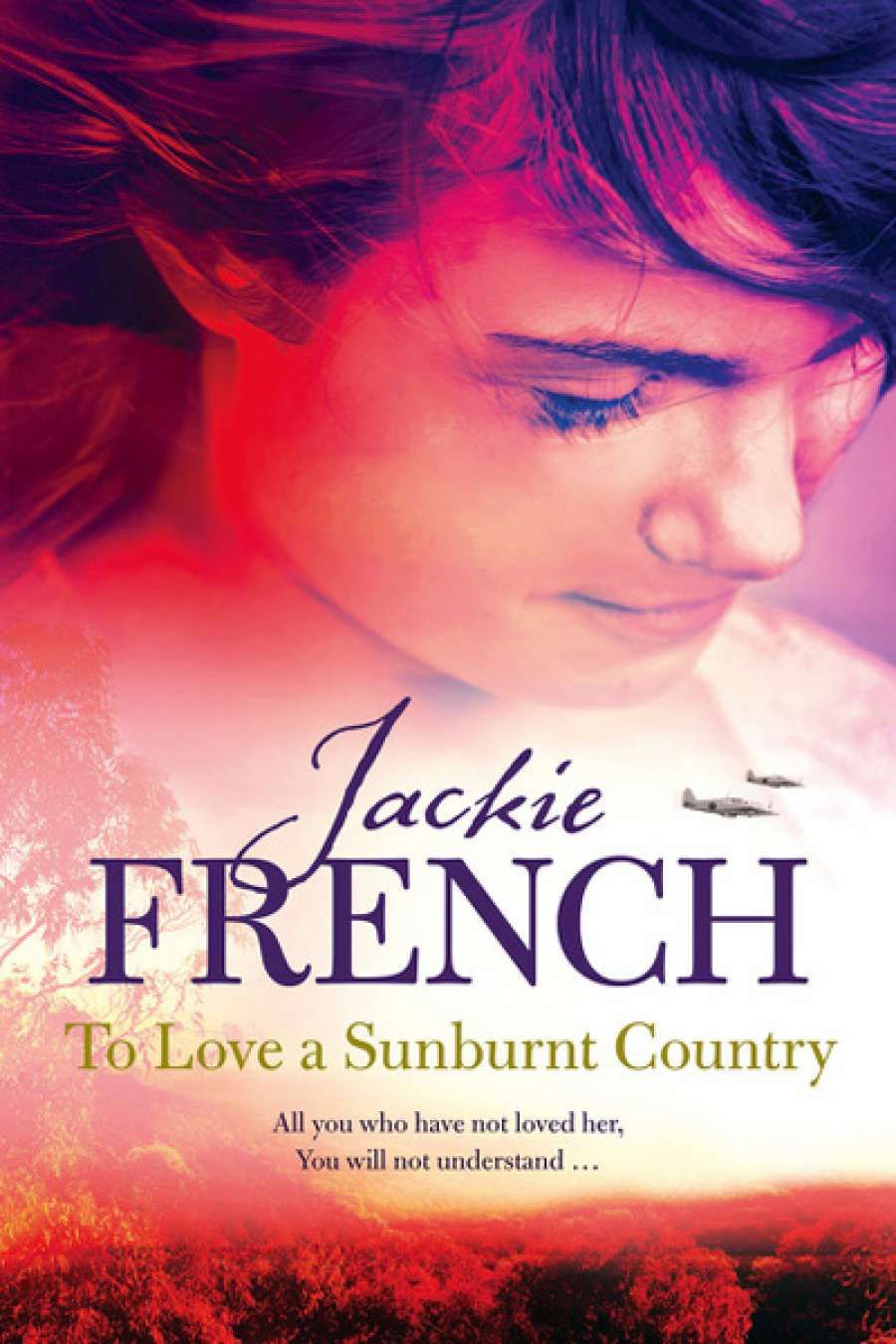
- Free Article: No
- Contents Category: Fiction
- Custom Article Title: Gillian Dooley reviews 'To Love a Sunburnt Country' by Jackie French
- Review Article: Yes
- Article Title: A sunburnt country
- Online Only: No
- Custom Highlight Text:
Jackie French, according to the press release for her new adult novel To Love a Sunburnt Country, has written over 140 books in a twenty-five-year career. Many are for children and teenagers. I have only read one other, A Waltz for Matilda (2012), the first in ‘the Matilda Saga’ for teens; but these two books share at least one character and several characteristics.
- Book 1 Title: To Love a Sunburnt Country
- Book 1 Biblio: Angus & Robertson, $29.99 pb, 466 pp
Nancy is, however, not in her beloved sunburnt country when the story begins. She is in Malaya with her snobbish English sister-in-law Moira, and trying to persuade her to bring baby Gavin to the safety of her parents’ station (‘Overflow’). Alas, it is December 1941, and sixteen-year-old Nancy, despite having an astonishing grasp of geopolitics and extensive experience droving cattle, can neither make Moira move before she is ready nor prevent the Japanese army from invading. The two women and the child fetch up on the Malayan island of Pulau Ayu, via a stay in Raffles Hotel, a torpedoed evacuation ship and a day and night in the water. There they stay for three and a half years, in a small prison camp with a dwindling group of memsahibs, surviving on cassava and the occasional rat or lizard, cooked on the fire that only Nancy is able to light, helped by the medicinal properties of the flowers from a nearby bush which resemble some that Nancy’s Aboriginal grandmother had shown her.
It would be unfair to claim that this novel ignores the harsh realities of war. When she washes up on the beach at Pulau Ayu, Nancy is greeted by a horrible sight:
Grey things lay draped across it. She tried to block her mind to what they were, but brain and eyes computed nonetheless. Bodies. Women’s bodies, in dresses streaked with red.
There is something troubling about the greyness of these bodies. Even streaked with red, this monochrome mass has an unreal quality. Although selective attention is probably a psychological necessity for the characters, for the reader it is a literary failing which persists throughout the book: there are deaths and deprivations but the mind is not fixed by them: it is too easy to move on, to look away. The burden of this novel is very much that, in order to survive the kind of extreme adversity people are subjected to in wartime, there must be powerful, positive reasons to do so. For Nancy, the reasons are a strong sentimental and spiritual connection to her home, and a romantic connection to young Michael, with whom she had formed a precocious understanding before she left. The capacity for these connections to temper hardship is a constant refrain, sometimes with unintentionally comic effect. When the prisoners eat their first meat for months – boiled rat and gecko – ‘somehow the wind from the sea seemed to breathe Australia, the scent of gum leaves, the scent of Overflow.’
 Jackie French
Jackie French
Back at the station, Nancy’s parents don’t know whether she has survived. But Michael, still reluctantly a schoolboy, has good news for them. He has seen a swan, and just knows she is alive, and that he would just know if she was dead. In the meantime, the whole Gibber’s Creek community knuckles down to raise funds for the war effort and to produce the supplies needed by the troops, knitting socks, keeping up morale, and being unfailingly considerate and fair-minded to all. Many of the chapters are prefaced by extracts from the Gibber’s Creek Gazette, with a mixture of war news (‘Singapore Surrenders’, ‘General Macarthur Arrives to Take Command!’), local notices about the volunteer defence force and the CWA, the fundraising antics of the local schoolchildren (‘the “bushrangers” raised twenty-three pounds, four shillings and tuppence halfpenny. Well done, Gibber’s Creek Central School!’), and the comic bickering of two of the local councillors. This community has been the setting for several of French’s novels; her loyal readers will be familiar with the intricate web of family relations, including retired circus performers, wealthy industrialists, Aboriginal elders, and the elephant in the back paddock, which might bewilder the novice.
Other nationalities are given some grudging credit, but Australians appear in this novel as a plucky lot, always ready with a kind word or a flippant remark as the occasion requires. This novel will appeal to patriotic and romantically inclined readers, but its sentimentality saps much of the power of its setting in the thick of one of humankind’s most atrocious wars.


Comments powered by CComment